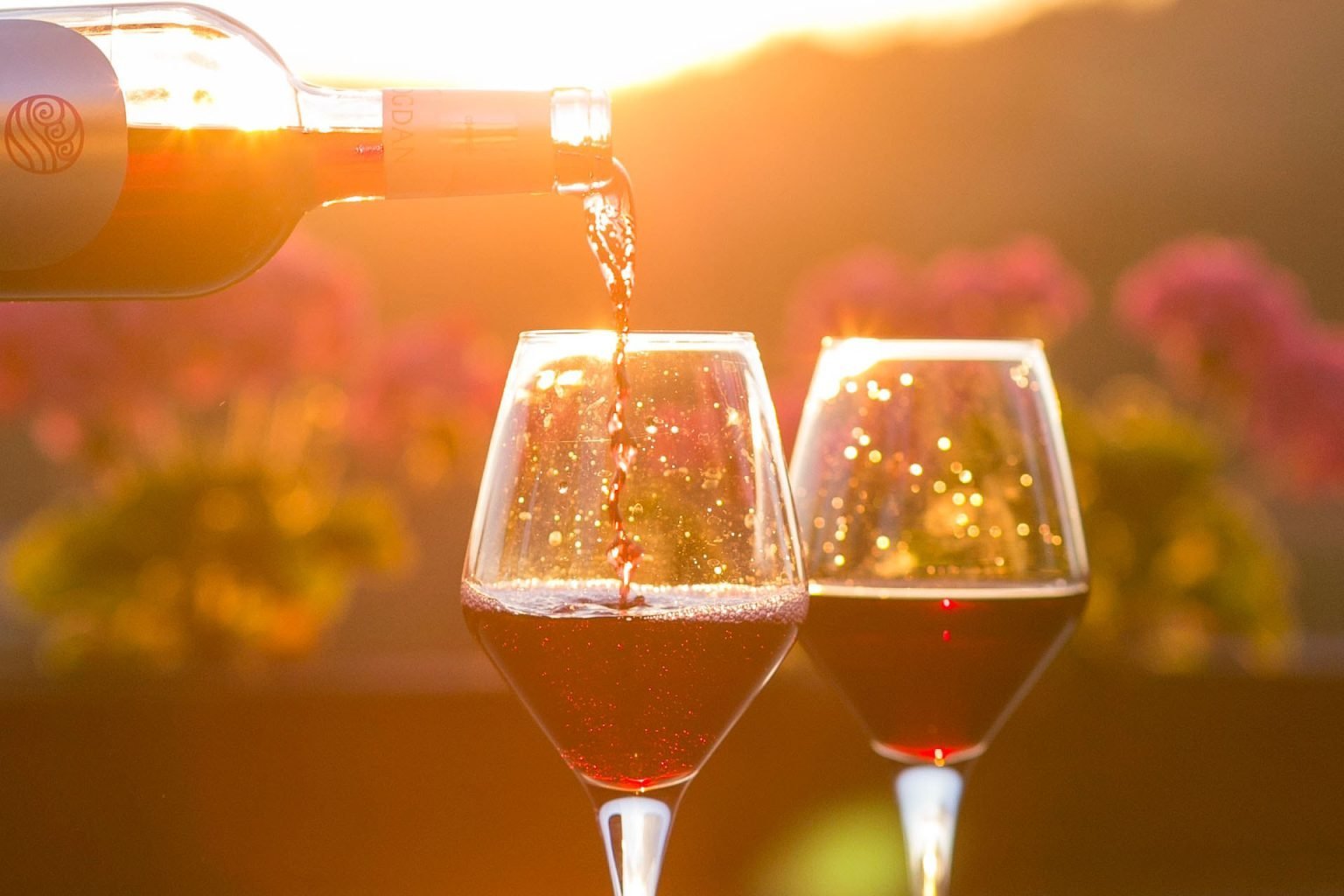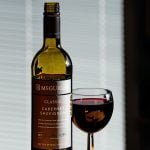Wine is an alcoholic beverage made from fermented grape juice. It can also be made from other fruits, such as apples or berries, but the vast majority of wine is made from grapes. Wine is produced by fermenting the juice of grapes with yeast, which converts the sugar in the grape juice into alcohol. Wine can be made in a variety of styles, including red, white, rose, and sparkling.
The History of Wine
Wine has been produced and consumed for thousands of years. The oldest known winery, located in Armenia, dates back to 4100 BC. Wine has played an important role in many cultures throughout history, from ancient Greece and Rome to medieval Europe and beyond. The popularity of wine has continued to grow, with wine production and consumption increasing around the world in recent decades.
Wine Regions of the World
Wine is produced in many regions around the world, each with its unique climate, soil, and grape varieties. Some of the most famous wine regions include France, Italy, Spain, the United States, Australia, and South Africa. Each region has its own distinctive style of wine, shaped by the local climate and winemaking traditions.
Wine Grapes
There are hundreds of different grape varieties used to make wine, each with its unique flavor profile and characteristics. Wine grapes can be divided into two main categories: red wine grapes and white wine grapes.
Red Wine Grapes
Red wine grapes are typically smaller and sweeter than white wine grapes and have a thicker skin. Some of the most popular red wine grapes include:
Cabernet Sauvignon is a full-bodied red wine with high tannins and a rich flavor profile. It’s often aged in oak barrels to add complexity and depth.
Pinot Noir is a lighter-bodied red wine with a delicate flavor and aroma. It’s often described as having a silky texture and is commonly paired with poultry and seafood.
Merlot is a medium-bodied red wine with a smooth and easy-drinking taste. It’s often blended with other red grapes and pairs well with a variety of dishes.
White Wine Grapes
White wine grapes are larger and less sweet than red wine grapes and have a thinner skin. Some of the most popular white wine grapes include:
Chardonnay is a full-bodied white wine with a rich and buttery flavor. It’s often aged in oak barrels to add depth and complexity.
Sauvignon Blanc is a crisp and refreshing white wine with a zesty flavor profile. It’s often paired with seafood and salads.
Riesling is a sweet and aromatic white wine with a fruity flavor. It’s commonly paired with spicy foods and desserts.
The Winemaking Process
Winemaking is a complex process that involves several steps, from harvesting and crushing the grapes to aging and bottling the wine. Here’s a brief overview of the winemaking process:
Harvesting and Crushing
Grapes are harvested from the vineyard and transported to the winery for processing. The grapes are sorted by hand or machine to remove any stems, leaves, or debris. The grapes are then crushed, either by hand or using a machine, to release the juice.
Fermentation
The grape juice is transferred to a tank or barrel for fermentation. Yeast is added to the juice to convert the sugar in the grapes into alcohol. The fermentation process can take several weeks to several months, depending on the style of wine being produced.
Aging and Bottling
After fermentation is complete, the wine is aged in oak barrels or stainless steel tanks to develop its flavor and aroma. The wine is then bottled, often with the addition of sulfites to preserve its freshness.
Types of Wine
Wine can be divided into several categories based on factors such as color, sweetness, and style. Here’s a brief overview of some of the most common types of wine:
Red Wine
Red wine is made from red grapes or a blend of red and white grapes. It has a bold flavor and is often paired with red meat and hearty dishes. Some of the most popular types of red wine include:
Cabernet Sauvignon
Cabernet Sauvignon is a full-bodied red wine with high tannins and a rich flavor profile. It’s often aged in oak barrels to add complexity and depth.
Pinot Noir
Pinot Noir is a lighter-bodied red wine with a delicate flavor and aroma. It’s often described as having a silky texture and is commonly paired with poultry and seafood.
Merlot
Merlot is a medium-bodied red wine with a smooth and easy-drinking taste. It’s often blended with other red grapes and pairs well with a variety of dishes.
White Wine
White wine is made from white grapes or a blend of white and red grapes. It has a lighter flavor and is often paired with seafood and light dishes. Some of the most popular types of white wine include:
Chardonnay
Chardonnay is a full-bodied white wine with a rich and buttery flavor. It’s often aged in oak barrels to add depth and complexity.
Sauvignon Blanc
Sauvignon Blanc is a crisp and refreshing white wine with a zesty flavor profile. It’s often paired with seafood and salads.
Riesling
Riesling is a sweet and aromatic white wine with a fruity flavor. It’s commonly paired with spicy foods and desserts.
Rose Wine
Rose wine is made from red grapes but has a lighter color and flavor than red wine.
It’s often described as having a refreshing and fruity taste, and is commonly served chilled.
Sparkling wine is a type of wine that contains bubbles, either naturally or through carbonation. It can be made from white or red grapes and is often associated with celebrations and special occasions.
Wine Tasting
Tasting wine is a skill that takes practice and experience. Here are some of the key factors to consider when tasting wine:
Appearance
The appearance of a wine can tell you a lot about its age, varietal, and style. Look at the color and clarity of the wine, as well as the viscosity and legs.
Aroma
The aroma, or “nose,” of a wine can be complex and layered. Take a deep sniff and try to identify the different scents, such as fruit, flowers, spices, or oak.
Taste
The taste of a wine can be influenced by several factors, including the grape variety, terroir, and winemaking techniques. Pay attention to the flavor profile, acidity, tannins, and body of the wine.
Mouthfeel
The mouthfeel, or texture, of a wine can range from light and crisp to full and velvety. Consider the weight and texture of the wine on your tongue, as well as the length of the finish.
Pairing Wine with Food
Pairing wine with food can enhance the flavors and aromas of both the wine and the dish. Here are some basic guidelines for pairing wine with food:
Red Wine Pairings
Red wine pairs well with hearty dishes, such as red meat, pasta, and stews. Some common red wine pairings include:
Cabernet Sauvignon with steak or lamb
Pinot Noir with duck or salmon
Merlot with pasta or pizza
White Wine Pairings
White wine pairs well with light dishes, such as seafood, salads, and poultry. Some common white wine pairings include:
Chardonnay with chicken or fish
Sauvignon Blanc with oysters or shrimp
Riesling with spicy food or Asian cuisine
Storing and Serving Wine
Proper storage and serving temperature can make a big difference in the taste and quality of wine. Here are some tips for storing and serving wine:
Temperature
Wine should be stored and served at the appropriate temperature for its style. Red wine should be served at room temperature or slightly below, while white wine and sparkling wine should be served chilled.
Humidity
Wine should be stored in a cool, dark, and humid environment to prevent the cork from drying out and the wine from spoiling.
Light
Wine should be stored away from direct sunlight, as UV rays can damage the flavor and aroma of the wine.
Position
Wine should be stored on its side to keep the cork moist and prevent air from entering the bottle.
Conclusion
Wine is a complex and fascinating beverage with a rich history and a variety of styles and flavors. Whether you’re a seasoned wine connoisseur or just starting to explore the world of wine, there’s always something new to discover. By understanding the basics of winemaking, grape varieties, and wine tasting, you can enhance your appreciation of this delightful beverage and make the most of your wine-drinking experience.
FAQs
What is the best temperature to serve red wine?
Red wine is best served at room temperature or slightly below, between 60-68°F (16-20°C).
How long can you age wine?
The aging potential of wine depends on several factors, including the grape variety, winemaking techniques, and storage conditions. Some wines, such as Cabernet Sauvignon or Pinot Noir, can age for several decades, while others, such as Beaujolais or Sauvignon Blanc, are best enjoyed young.
Can you drink wine that has gone bad?
Wine that has gone bad can have off-putting aromas and flavors, such as vinegar, mold, or mustiness. While drinking spoiled wine is not harmful, it’s not recommended as it can cause digestive discomfort.
What is the best way to store wine at home?
Wine should be stored in a cool, dark, and humid environment, away from direct sunlight and fluctuations in temperature. Ideally, wine should be stored on its side to keep the cork moist and prevent air from entering the bottle.
What is the difference between a wine varietal and a wine blend?
A wine varietal is a wine made from a single grape variety, while a wine blend is made from a combination of grape varieties. Blending can be used to enhance the flavor and complexity of wine and is commonly used in regions such as Bordeaux or Chateauneuf-du-Pape.



